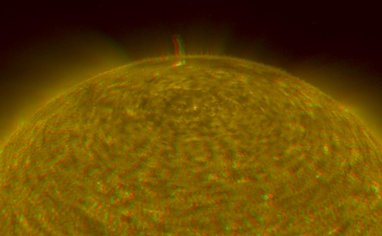What You Will Learn

In our solar system, Earth is just one small planet. The solar system includes several much larger planets and huge numbers of other objects traveling around the Sun in enormous orbits. The distances between objects in the solar system are vast, and it consists mostly of empty space.
Here are the big ideas you will learn about in this lesson:
- The solar system consists of the Sun, the planets and their moons, and many other objects, such as dwarf planets, asteroids, and comets, in orbit around the Sun.
- Gravity is the force that holds the solar system together and controls orbital motions.
- The sizes of objects in the solar system, and the distances between them, are so large that they can be difficult to comprehend. Scale models can help make the size of the solar system easier to understand.
- Various scales can be used to represent the solar system more conveniently.
